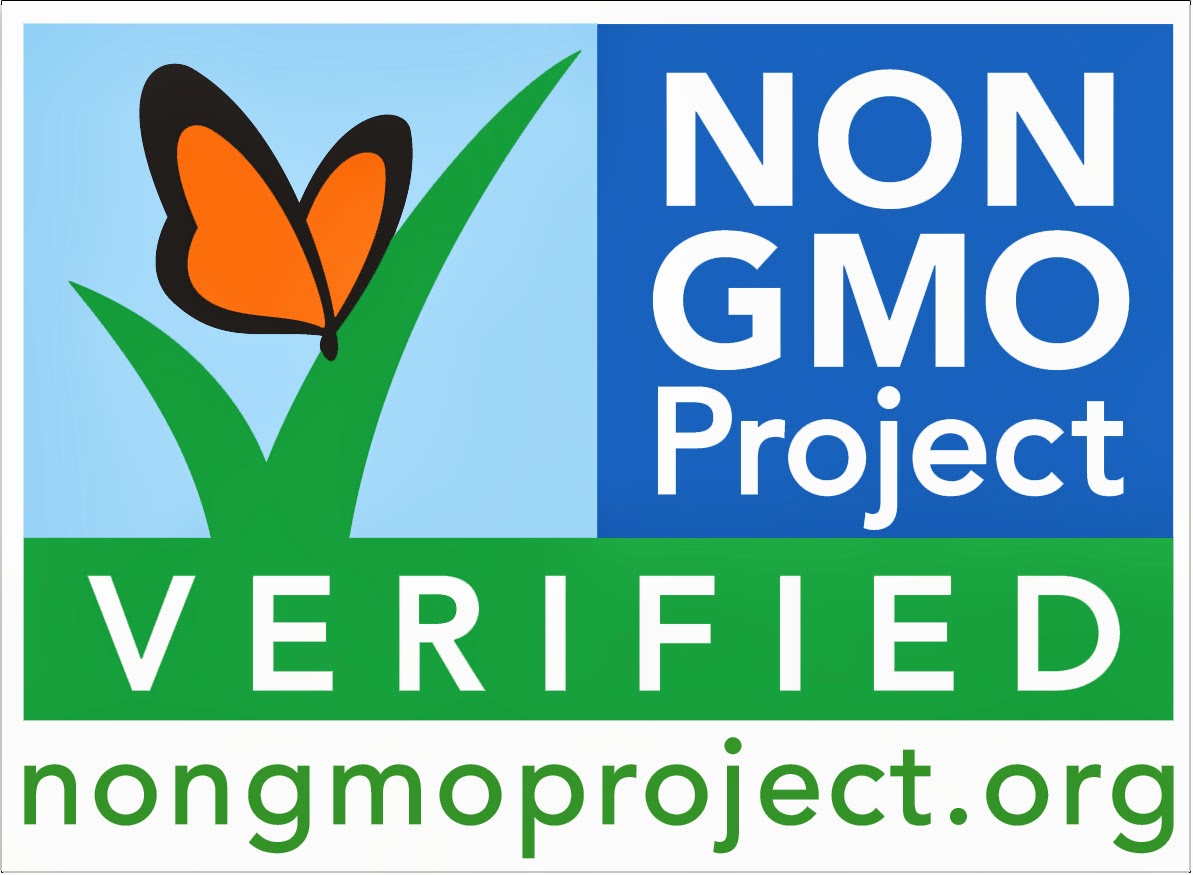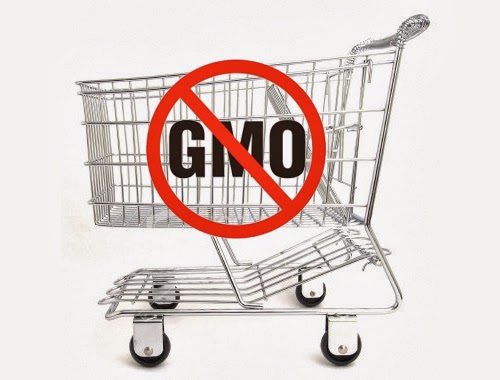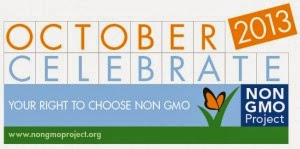Yes, GMOs are Everywhere. What to Do?
Written by Gayle
What are GMOs?
Over the past many years, scientist have been modifying organisms by genetic engineering their DNA. In food crops, bacteria and viruses, even, are inserted into the DNA of the plant. DNA from one species is spliced into the DNA of another species. This is far different than selective or mutation breeding. Genetically modifying an organism is done to improve the disease or pest resistance of the crop, increase yields, or decrease the time needed to maturity. The majority of the GMO crops were developed in order to resist being killed by a powerful and toxic plant killer, RoundUp. (Why again do we want to be able to use MORE herbicides?) These GMO crops were introduced into the food supply in the United States in 1994, with the Flavr Savr tomato that didn’t ripen until after the crop had been harvested (thus making the tomato sturdier for harvest and shipping.)
Why Have GMOs Been Developed?
While the aim of genetically modifying crops seems noble–increasing yields, increasing pest resistance, and faster maturation of the crops–the scientists were not as concerned with testing for side effects. Animals have been widely fed GMO feed crops (especially cattle) and very little testing has been done to see how the GMO feed affects the health of the animals. Very few studies have been done to test how GMO crops affect the health of the humans who are consuming GMO foods. While a large percentage of scientists feel that GMO foods pose no greater risk to health than non-GMO foods, the fact of the matter is that the long-term scientific studies have not been done. We just don’t know for sure. And there is always the question of who paid for the studies that have been done.
How Common Are GMOs in Our Foods? And What are the Risks?
Up to 80% of packaged foods include GMOs in their products. Eighty-five percent of soy, corn, sugar beets, cotton (including cotton-seed oil) and canola crops are from GMO seeds. Those nachos that you ate at the ball game are without a doubt full of GMO corn and oil. But how would you ever know? And what are the risks of consuming GMOs? This article from the institute of Responsible Technology raises several potential risks, including fertility problems, increased allergies, asthma, and more. Here is another article that is over 10 years old raising questions about the safety of GMO crops. (And the Biotech industry has still been able to defeat labeling laws!)
How Will We Know What Foods Contain GMOs?
The truth is, the way the law stands right now, you don’t have to be informed. That’s why Lassen’s supports GMO labeling. We were all disappointed when the GMO Labeling Proposition 37 in California failed during the last election. Consumers have a right to know what is in the products that they are purchasing. Up to 91% of consumers want to know if the products they are buying contain GMOs.
What Can We Do?
We are not left helpless, however, even though labeling GMOs is not the law.
1–Learn More
The Non-GMO Project is a good place to start. Click here to go to their website and learn all about GMOs.
2–Buy Non-GMO labelled Products
The Non-GMO Project has instituted a voluntary label for manufacturers. A group of retailers believed that consumers deserved to know if their products were GMO free or not. They developed a verification process that tests and verifies the products that wish to carry the Non-GMO label. Go here to learn what the Non-GMO label on a product means.
3–Buy Organic–and Not Just for Fresh Produce
When a product has the USDA Organic Seal, it complies with the regulations that it does not contain GMO ingredients. Look for it on all of your packaged goods.
4–Eat More Fresh Organic Produce
As stated above, Organic means non-GMO. But if you must eat non-organic fruits and vegetables (such as in restaurants), watch out for Hawaiian papaya, edamame, zucchini, yellow summer squash, and sweet corn. They are approved and currently can be commercially grown from GMO seeds. Not all of those items are from GMO seeds, but without labeling, consumers won’t know if the produce they are eating are or are not GMOs. Other crops have been approved to be grown from GMO seeds, but currently have not been planted. Buying and eating certified organic produce will assure that what you are consuming is Non-GMO.
 |
| Love this graphic from Ben and Jerry’s! |
5–Watch Out for Meat, Dairy, Eggs and Fish Products
Yes, you guessed it. Beef cattle, dairy cows, poultry, and farmed fish are often fed GMO feed. To avoid consuming meats that have been produced with GMO products, choose organic, free-range (on farms with non-GMO crops, including alfalfa), and wild-caught fish. Here is my blog post making the case for organic, grass fed meats, and here is my post about farmed vs wild-caught fish.
 |
| But remember, it doesn’t have to be labeled in the USA. You probably won’t see this on any labels here! |
6–It’s Not Just the Main Ingredients
Lots of packaged foods have corn starch, corn syrup, soy additives, oils, sugars, flavorings, thickeners and so on that could be GMO crops. Organic or Non-GMO Verified labels are your best bet to make sure those hidden additives are not GMOs.
7–Don’t Be Afraid of Crops Not Currently Grown From GMO Seeds
As long as you avoid soy and corn, you can feel good about buying and consuming other dry beans, nuts, seeds, and grains. But of course, Organically grown is always a great choice, not only for your health, but for the health of the plants.
8–Celebrate Non-GMO Month by Becoming More Aware
Take a little time to read labels and do some research this month. And support those companies that refuse to use GMOs in their products, and the businesses that support non-GMO products and labeling.
9–Contact Your Local and State Government Officials
Let your voice be heard in this debate. Consumers have a right to know what they are buying and consuming. Click here to find the contact information for members of the California Legislature, and here for the Federal Government. Take a few minutes to send an email, expressing your opinion on this important subject.
Look for lots of GMO-free products at Lassen’s!
love,
Lassen’s




I am so appreciative of your GMO labeling. I recently viewed a pbs doc on this practice and how the fda and usda let it all slide. They said it’s been going on for years. I even checked a tuna packet and soy was listed! I order from schwan’s and don’t know if I should. Unfortunately, most of the brands listed that have the non gmo label I haven’t heard of. I do buy a lot of organic fruit and veggies, but soy, corn and lecithin are everywhere.
I hope items with small amounts are less harmful. I don’t want to toss everything I just bought last week. I definitely will be visiting your store soon.
Yes, there are lots of things to think about! Our staff can help you figure out what everything means, too, and I’m glad we can help!